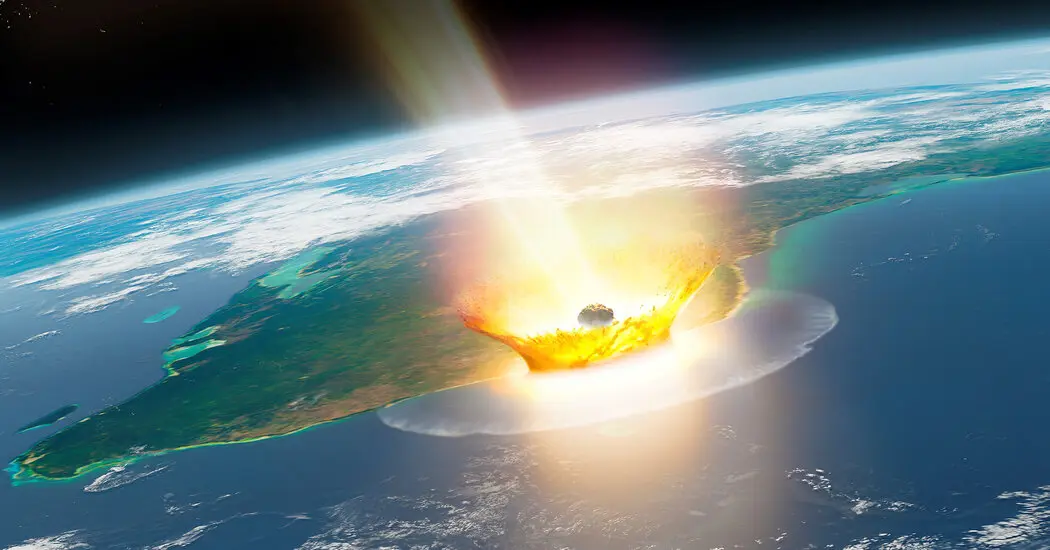Lemme guess. It was extra-solar?
But evidence has been mounting in recent years that the roughly six-mile-wide impactor belonged to a family of asteroids that formed beyond the orbit of Jupiter, and that rarely impact Earth.
… The siliceous asteroids that impact Earth usually come from the asteroid belt. But it is still unclear how a massive carbonaceous asteroid ended up on a collision course with our planet. One possible origin is a population of carbonaceous asteroids that exists today at the outer edge of the asteroid belt. Though these rocks initially formed beyond Jupiter, scientists think that gravitational instabilities in the early solar system launched them inward to their current position.
I was sorta-kinda right (it came from further out than usual). Sounds like it might have belonged to a relatively unstudied group of asteroids. I wonder why siliceous asteroids are closer to the sun and carbonaceous ones are further away.
Many mysteries remain about the Chicxulub impact, as well as about the broader role that asteroid strikes have played in the emergence and evolution of life on Earth — and, potentially, other planets. Carbonaceous asteroids have wiped out untold species in our planet’s past, but they may have also helped seed Earth with water, and other essential ingredients for life, at the dawn of the solar system.
How interesting 🤔
I wonder why siliceous asteroids are closer to the sun and carbonaceous ones are further away.
Gravitational stratification, maybe? (Analogous to why lighter fluids float on heavier ones, even though asteroids aren’t touching each other?)


